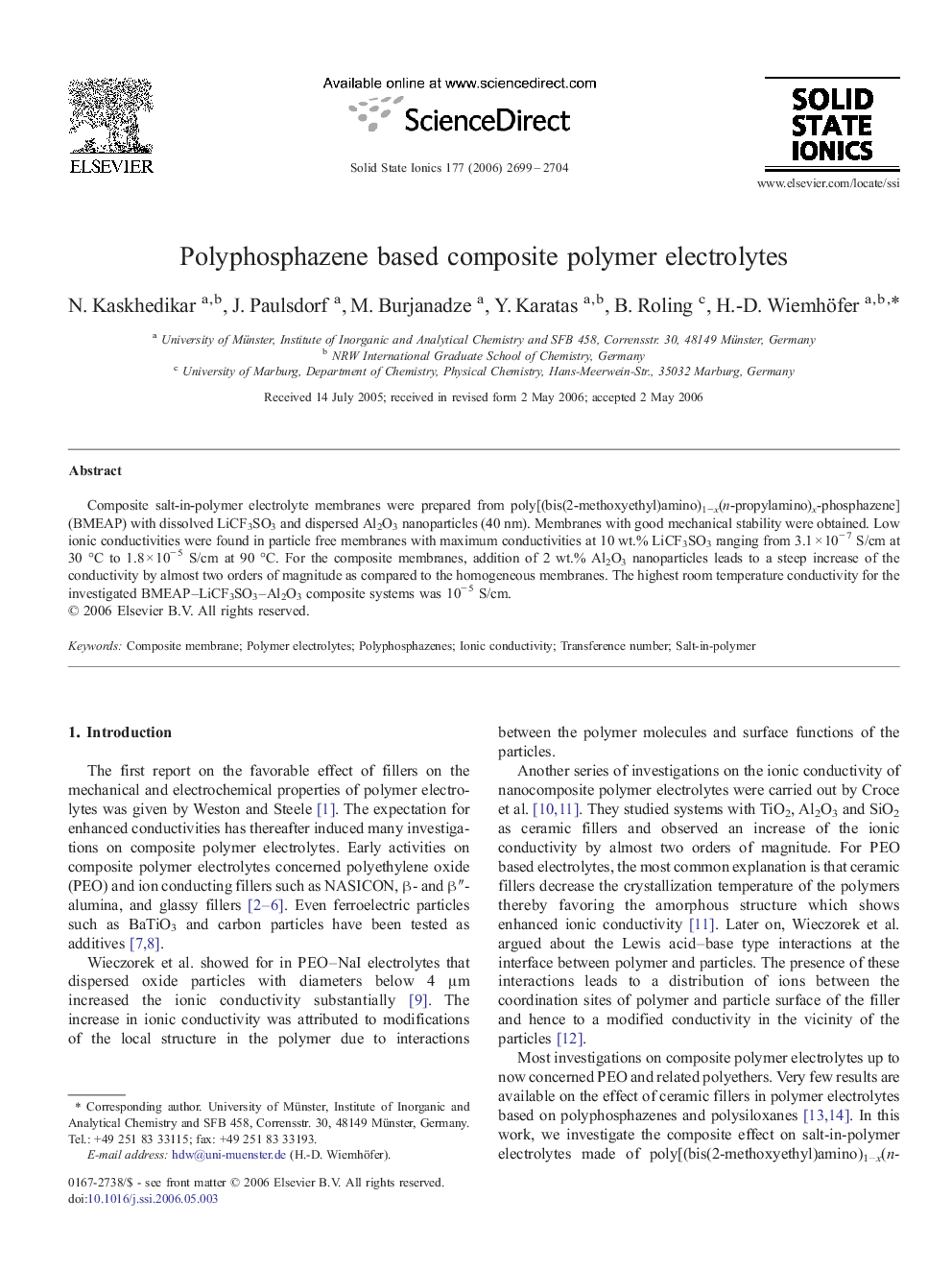| Article ID | Journal | Published Year | Pages | File Type |
|---|---|---|---|---|
| 1295555 | Solid State Ionics | 2006 | 6 Pages |
Abstract
Composite salt-in-polymer electrolyte membranes were prepared from poly[(bis(2-methoxyethyl)amino)1−x(n-propylamino)x-phosphazene] (BMEAP) with dissolved LiCF3SO3 and dispersed Al2O3 nanoparticles (40 nm). Membranes with good mechanical stability were obtained. Low ionic conductivities were found in particle free membranes with maximum conductivities at 10 wt.% LiCF3SO3 ranging from 3.1 × 10− 7 S/cm at 30 °C to 1.8 × 10− 5 S/cm at 90 °C. For the composite membranes, addition of 2 wt.% Al2O3 nanoparticles leads to a steep increase of the conductivity by almost two orders of magnitude as compared to the homogeneous membranes. The highest room temperature conductivity for the investigated BMEAP–LiCF3SO3–Al2O3 composite systems was 10− 5 S/cm.
Keywords
Related Topics
Physical Sciences and Engineering
Chemistry
Electrochemistry
Authors
N. Kaskhedikar, J. Paulsdorf, M. Burjanadze, Y. Karatas, B. Roling, H.-D. Wiemhöfer,
